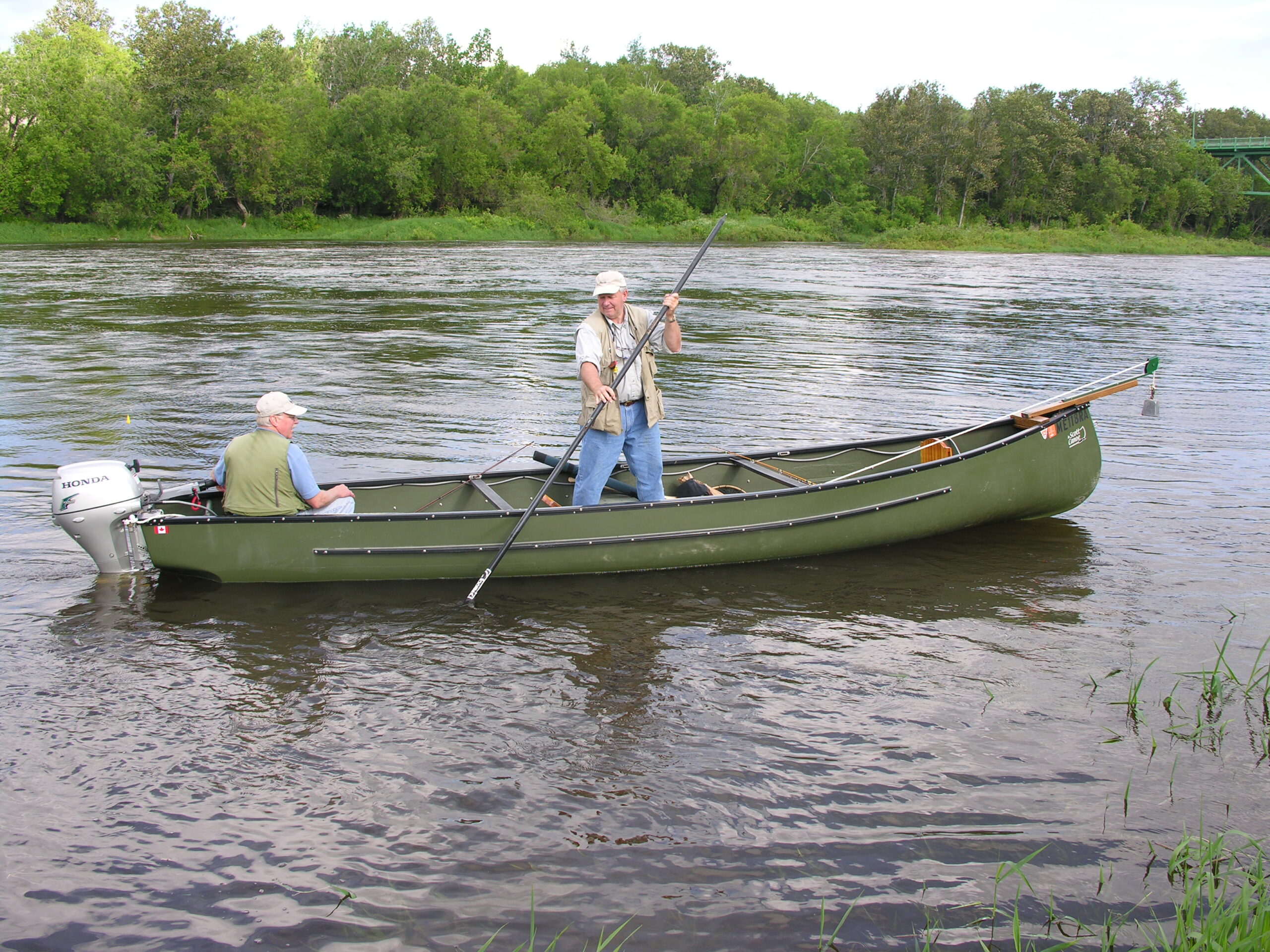
I have around 60 years of fishing experience in my rearview mirror, most outings close to home, but hundreds of rare, unique and memorable rod and reel expeditions in other states, provinces and countries.
During these angling adventures I’ve been in every size, shape and style of watercraft imaginable, from a 10-foot, homemade, wooden Jon boat of questionable buoyancy integrity held together with nails, pitch, paint and a prayer, to a 50-foot custom-built yacht rigged for deep seas, fishing marlin and sailfish. But my favorite continues to be a long, stable, square-stern canoe.
Whether it’s a remote trout pond at dawn or twilight casting on an Atlantic salmon pool, there’s no more traditional watercraft that reflects age-old angling heritage than a canoe. I’ve owned a dozen or so over the years; loved a few, tolerated some, felt remorse with every final parting.
Now it’s April and time to go through my canoe launch checklist to assure everything goes smoothly when it’s actually time to fish in a couple of weeks. Postponing repairs, maintenance and upkeep is a sure way to end up with an equipment problem that ruins an outing. I’ll go over a quick checklist that I try very hard to follow each spring, and perhaps we can avoid frustration and be on the water safe and on time.
Odds are high that some sort of trailer malfunction will interfere with your fishing trip sooner or later, with a motor defect or a boat glitch running second and third in ruining an outing. The two most perilous breakdowns, possibly leading to an accident, are a trailer hitch failure or a wheel bearing seizing up. It takes less than half an hour to check wheel bearings and grease as needed, and then check the latch and lock system and apply dry lubricant to the ball hitch mechanism.
Other quick but necessary boat trailer inspection points include the winch mast bolts, winch lock, handle, pull strap and hook and the short canoe safety chain. Look at the tire wear and pressure; especially be sure the spare tire is solidly attached and full of air. Plug in the light socket and check the running and signal lights, changing out bad bulbs. Don’t forget the license plate light, and while you’re at it be sure the boat and trailer registration tags are up to date. Updates can be accomplished online.
As for your outboard motor, if you winterized properly it should start up and run just fine. To be safe I always attach a set of water ear muffs or set the motor foot into a barrel of water and test run it before leaving home. I fill the portable tank with fresh gas, preferably ethanol free, to start each season off. It’s best to address any ignition, starting and low idle problems a week or two before any outings, just in case repairs are needed.

Float a canoe on a remote pond and enjoy a day fishing with a friend from a sleek, traditional watercraft and it’s like heaven on earth. (Courtesy of Bill Graves)
As for the canoe itself, especially my big Maine Freighter model, I make some initial alterations before it ever goes in the water, and double check those pre-season. I have the dealer build me an extra-long gas line, 25 feet, and suspend it with screw-in plastic wire clamps under the right gunnel lip the full length of the 21-foot canoe. This allows me to keep my portable, plastic gas tank in the bow to add weight to the front of the canoe and be out of the way.
Since I river fish and water flow is often swift, I require a heavy bow anchor to drop and maintain casting position. It’s a minimum of 40 pounds in a solid lead pyramid that I can control from the stern seat where I run the motor. The 50-foot anchor line runs from a snub cleat beside that rear seat through four ceramic line guides screwed to the gunnel. This keeps the anchor line away from the center of the canoe, where it would hit seats and passengers while being raised and lowered, or might snag gear or equipment without guides to hold it to the side.
A 30-inch anchor mast bolts in place on the bow tip and extends far enough to keep the anchor from bouncing against the bow nose of the boat during transport or travel under motor power. A large pulley system eases the effort of raising, controlling and tying the rope to the cleat. While many canoeists don’t use an anchor, larger models used on large lakes and big rivers really need one for safety and stability, and anchoring from the stern is a poor option, even dangerous for several reasons. A quick check of these gas and anchor lines is wise before heading out.
Make sure you have the drain plug inserted and always carry an extra on board, as well as an extra manual pull start cord if you have an electric start motor. Use and double check the tie down and stabilizing straps, and use thick pieces of carpeting between the straps and gunnel sections they secure to eliminate scuff and wear areas where they rub during transport.
While all these inspections seem like quite a chore, if no major problems are encountered the whole list should only take an hour or so — much less time than being stranded along the road or at a boat launch unable to enjoy a planned fishing trip. Preparedness and peace of mind are worth a lot.
Now that the canoe and trailer are ready, do you know where all your fishing equipment is located and what condition the rods, reels, lines, leaders and other essentials are in?







